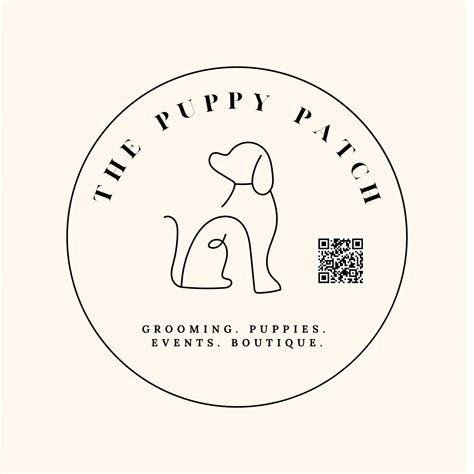- Release Year: 1996
- Platforms: Acorn 32-bit, Macintosh, Windows
- Publisher: 4Mation Educational Resources Ltd
- Developer: 4Mation Educational Resources Ltd
- Genre: Educational, Pre-school, toddler
- Perspective: 3rd-person
- Game Mode: Single-player
- Gameplay: Educational, Point and select

Description
Patch the Puppy is an interactive educational CD-ROM set on Barley Farm, designed for children aged 3 to 6. It features 12 engaging activities that focus on mathematics, language, and science, with high-quality speech and graphics. The game offers three difficulty levels and guides children through learning experiences, providing feedback to help them understand mistakes.
Patch the Puppy Patches & Updates
Patch the Puppy Mods
Patch the Puppy: Review
Introduction
In the mid-1990s, as CD-ROM technology revolutionized personal computing, a new wave of educational software swept across the market. Among these titles was Patch the Puppy, a charming interactive CD-ROM game developed and published by 4Mation Educational Resources Ltd. Designed for preschoolers and toddlers, this game aimed to merge entertainment with learning in a way that would engage young minds. Even today, Patch the Puppy holds a special place in the annals of educational gaming as a pioneering example of early childhood edutainment.
Development History & Context
The creation of Patch the Puppy was a collaborative effort led by Sue Rankin’s concept and design, Don Slaven & Hans Rijnen’s artwork, and Quantum Dot’s music. Developed during an era when CD-ROM’s increased storage capacity allowed for higher-quality graphics and audio, the game was part of a suite of educational titles from 4Mation. Published initially for Windows and Acorn 32-bit in 1996, followed by a Macintosh port in 2001, it rode the wave of technological advancements that made multimedia education accessible to home users.
The developers’ vision was to create an immersive learning environment that appealed to children aged 3-6. The use of point-and-click mechanics, animated characters, and narrated instructions was innovative for the time, making the game accessible even to non-readers. The focus on core curriculum areas like math, language, and science aligned with educational standards while ensuring the content remained engaging and fun.
Narrative & Thematic Deep Dive
Set in the idyllic Barley Farm, Patch the Puppy revolves around a series of 12 educational activities embedded within an exploratory framework. Children aren’t just passive recipients of information; they’re encouraged to interact with the environment and its inhabitants. The inclusion of four ‘Patch’ stories adds a narrative layer that helps maintain engagement and emotional investment.
The game’s central theme is learning through exploration and discovery. When players make mistakes, they receive constructive feedback rather than mere correction, fostering a positive learning environment. This approach aligns with modern educational pedagogy that emphasizes understanding over rote memorization.
Gameplay Mechanics & Systems
At its core, Patch the Puppy is a point-and-click adventure with an emphasis on mini-games. The 3rd-person perspective and fixed screens allow for precise cursor control, essential for young players. The UI is designed with large, intuitive buttons and clear visual prompts, minimizing frustration and encouraging independent play.
Each of the 12 activities targets specific learning objectives. For example, math activities might involve counting or basic arithmetic, while language games focus on vocabulary and reading skills. Science exercises could include simple biology or physics concepts presented in an interactive manner.
The three difficulty levels accommodate varying age groups and skill levels, ensuring that the game remains challenging yet achievable. Progression is handled through completing activities, which allows children to unlock new areas of the farm or new stories.
Innovative for its time, Patch the Puppy incorporated high-quality speech and graphics throughout. However, some potential flaws might include limited replayability due to the static nature of the activities or a steep learning curve for very young players not accustomed to computer interfaces.
World-Building, Art & Sound
The visual art of Patch the Puppy is a delightful blend of 2D sprites and pre-rendered backgrounds, creating a vibrant and colorful world that captivates young imaginations. Characters like the eponymous Patch and his friends are anthropomorphic and expressive, drawing children into their adventures.
The sound design is equally impressive, with Quantum Dot’s music providing a cheerful and uplifting backdrop. Professional narration and voice acting add depth to the characters and instructions, making the learning process feel like a conversation rather than a lecture.
These sensory elements work together to create an atmospheric and engaging environment where learning feels like play. The farm setting is both familiar and magical, encouraging children to explore every nook and cranny.
Reception & Legacy
Upon release, Patch the Puppy received positive feedback from parents and educators alike for its educational value and engaging gameplay. However, the game’s commercial success is difficult to quantify due to a lack of critic reviews and sales data. It’s likely that the game thrived in the school and home markets, helping to establish 4Mation as a key player in educational software.
Over time, as technology advanced and the educational software market evolved, Patch the Puppy may have faded from the mainstream. Nevertheless, its influence can be seen in subsequent edutainment titles that continue to use interactive storytelling and skill-based mini-games to teach children.
Conclusion
Patch the Puppy stands as a seminal work in the field of educational gaming, exemplifying how technology can be harnessed to create engaging, curriculum-aligned learning experiences. Its combination of artistic flair, intuitive gameplay, and pedagogical soundness make it a worthy candidate for preservation and study. For those who experienced it, Patch the Puppy remains a fond childhood memory, and for historians, it’s a vital artifact documenting the evolution of edutainment in video games.